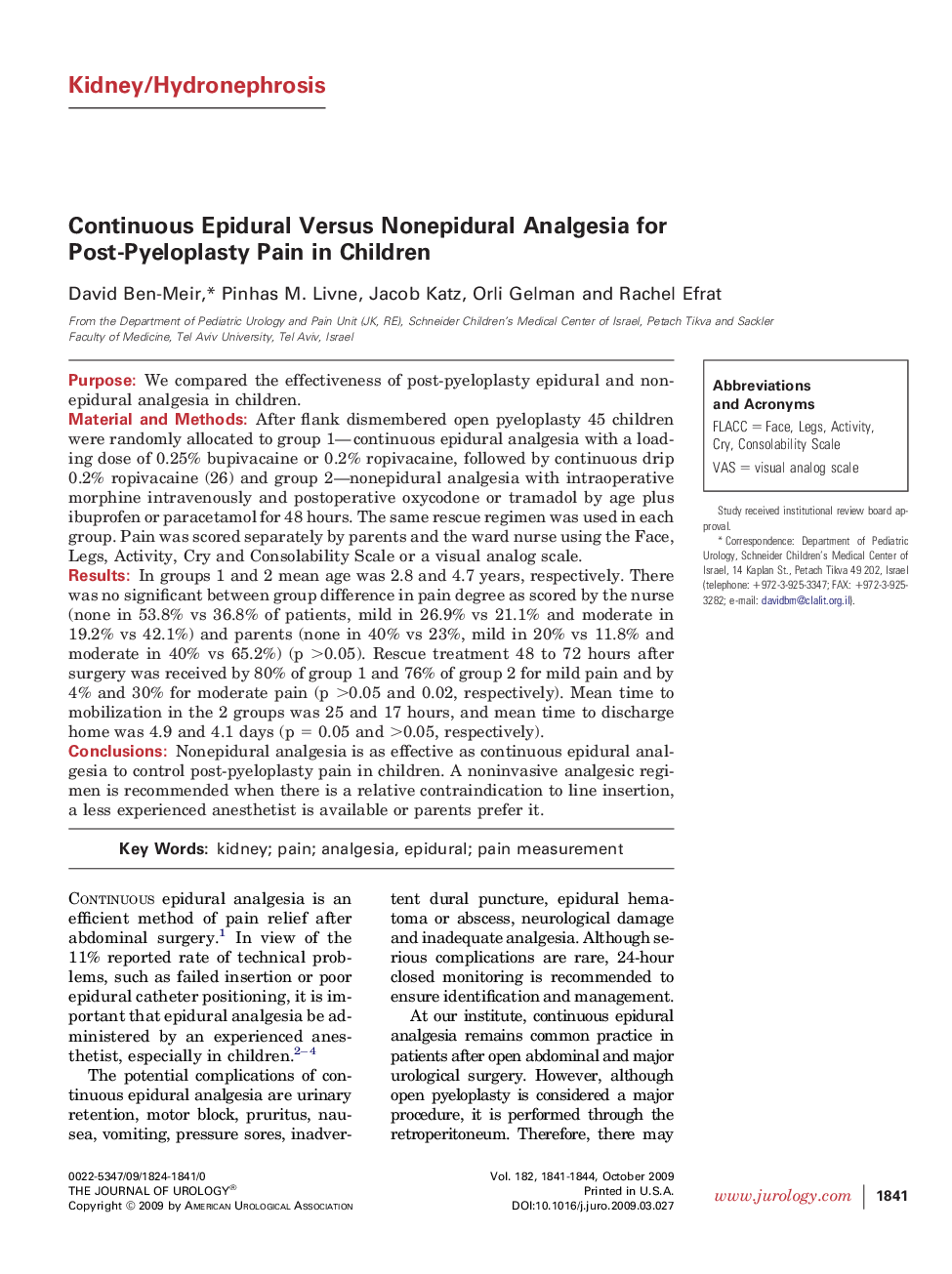| Article ID | Journal | Published Year | Pages | File Type |
|---|---|---|---|---|
| 3869374 | The Journal of Urology | 2009 | 4 Pages |
PurposeWe compared the effectiveness of post-pyeloplasty epidural and nonepidural analgesia in children.Material and MethodsAfter flank dismembered open pyeloplasty 45 children were randomly allocated to group 1—continuous epidural analgesia with a loading dose of 0.25% bupivacaine or 0.2% ropivacaine, followed by continuous drip 0.2% ropivacaine (26) and group 2—nonepidural analgesia with intraoperative morphine intravenously and postoperative oxycodone or tramadol by age plus ibuprofen or paracetamol for 48 hours. The same rescue regimen was used in each group. Pain was scored separately by parents and the ward nurse using the Face, Legs, Activity, Cry and Consolability Scale or a visual analog scale.ResultsIn groups 1 and 2 mean age was 2.8 and 4.7 years, respectively. There was no significant between group difference in pain degree as scored by the nurse (none in 53.8% vs 36.8% of patients, mild in 26.9% vs 21.1% and moderate in 19.2% vs 42.1%) and parents (none in 40% vs 23%, mild in 20% vs 11.8% and moderate in 40% vs 65.2%) (p >0.05). Rescue treatment 48 to 72 hours after surgery was received by 80% of group 1 and 76% of group 2 for mild pain and by 4% and 30% for moderate pain (p >0.05 and 0.02, respectively). Mean time to mobilization in the 2 groups was 25 and 17 hours, and mean time to discharge home was 4.9 and 4.1 days (p = 0.05 and >0.05, respectively).ConclusionsNonepidural analgesia is as effective as continuous epidural analgesia to control post-pyeloplasty pain in children. A noninvasive analgesic regimen is recommended when there is a relative contraindication to line insertion, a less experienced anesthetist is available or parents prefer it.
